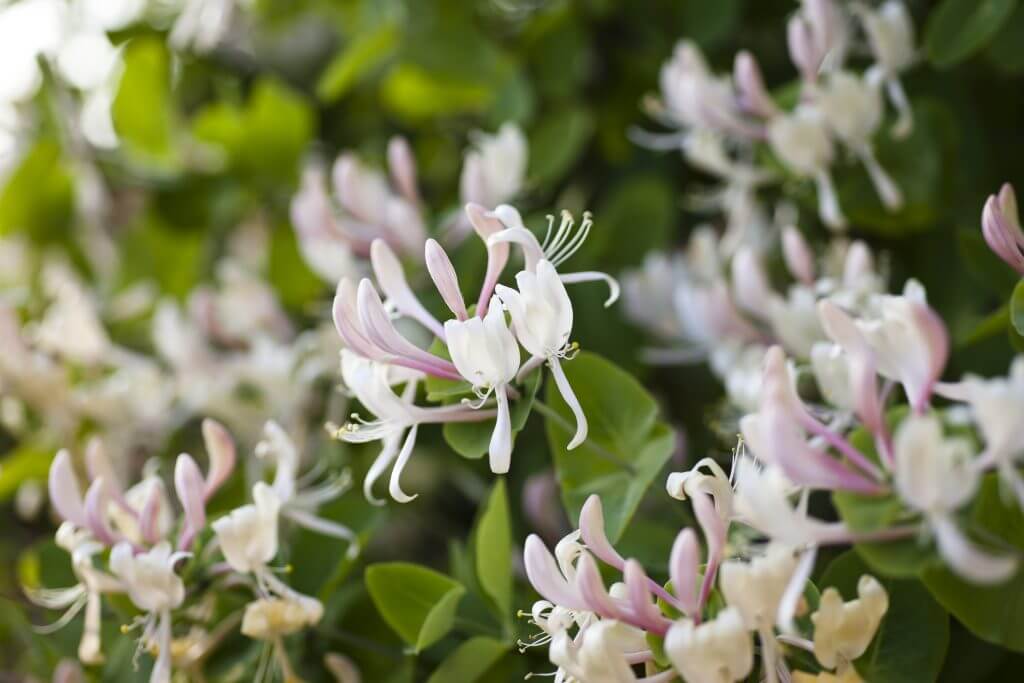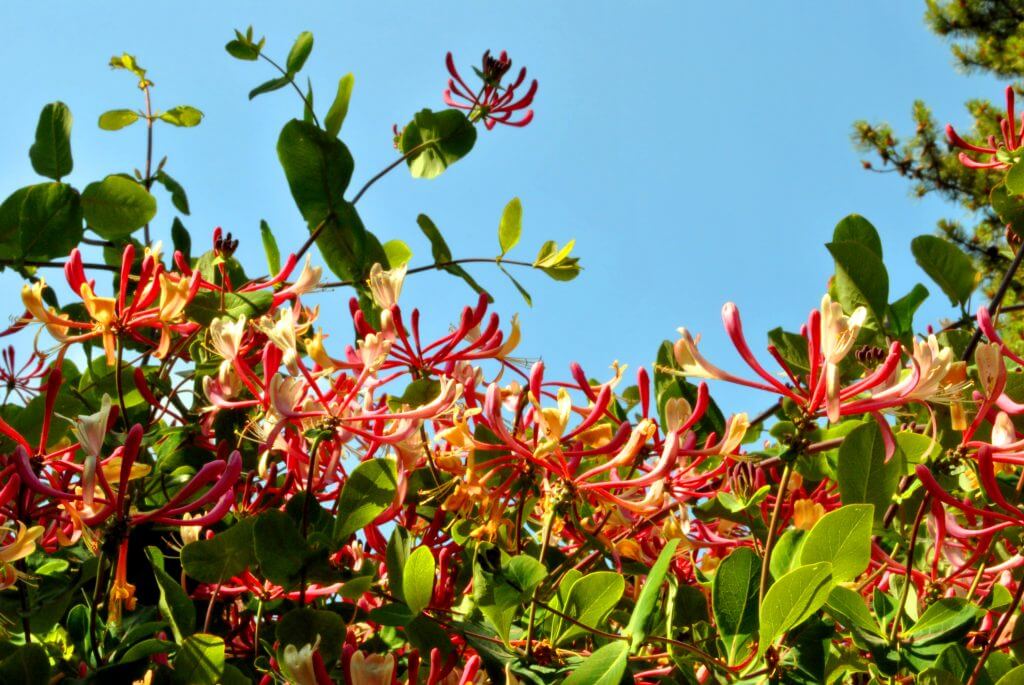The fragrance of honeysuckle adds to the beauty that its pretty flowers bring to the garden.
Honeysuckles bring back childhood memories of picking its flowers and tasting the sweet nectar from them.
These are popular plants because they are relatively easy to maintain and require very little care and attention once established.

The Basics of Honeysuckle
Honeysuckles or Lonicera are vines or shrubs of about 180 species native to North America and Eurasia.
The most common honeysuckle species include L. periclymenum or common honeysuckle, L. japonica or Japanese honeysuckle, and L. sempervirens also known as coral honeysuckle, woodbine honeysuckle, or trumpet honeysuckle.
Most honeysuckles are vines, but a few have a shrubby habit.
Some species of honeysuckle have fragrant blooms that are bright and colourful, and perfect as garden plants.
These flowers are bilaterally symmetrical, and their nectar sweet nectar is edible even for humans, but their berries can be poisonous. Honeysuckle flowers around summer, while some may even bloom in spring.
The honeysuckle’s berries can be black, blue, or red and can cause nausea and vomiting when consumed.
Some honeysuckles are evergreen, but most of them are deciduous.
Honeysuckle plant’s stems are strong and fibrous.
Beware of the Japanese honeysuckle because they are known to be very invasive and are even banned in certain places.
When choosing honeysuckle to plant, opt for the species native to your area, or those that are non-invasive.
Honeysuckle vines are excellent climbers and are usually great for walls and trellis.
The shrub honeysuckles make for good hedging or screen.
Here are some of the many honeysuckle varieties to choose from:
Lonicera fragrantissima
This variety is known as the winter honeysuckle. It is a deciduous shrub that has white scented flowers which appear from January to March. This variety is hardy and can grow to about 5 feet (1.5 metres).


Lonicera ‘Mandarin’
This is a relatively new variety. It has unscented orange flowers.


Lonicera nitida ‘Baggesen’s Gold’
This honeysuckle is a dense evergreen shrub. It has yellowish foliage and white flowers that grow in the spring.


Lonicera periclymenum ‘Graham Thomas’
The scented flowers of this honeysuckle variety change colour from white to yellow. This vigorous deciduous climber can reach up to 16 feet (5 metres).


Lonicera periclymenum ‘Serotina’
This honeysuckle has creamy white flowers with dark purple tops. This is also a vigorous deciduous climber that can reach up to 16 feet (5 metres).


Lonicera x tellmanniana
If you like orange and yellow flowers, this honeysuckle is the right choice. Just like the previous varieties mentioned, this is a vigorous deciduous climber that can reach up to 16 feet (5 metres).


Planting Your Honeysuckle
Honeysuckles can be planted from seeds, cuttings, seedlings, or transplanted as mature plants.
Plant your honeysuckle in spring when there is no more risk of frost. They can be planted in summer up to early autumn as well.
Choose a position where there is enough sun. Part shade is alright, although honeysuckles in the shade may not bloom as much as those in direct sun.
Plant your honeysuckles in well-draining and rich soil.
When planting vines, make sure to set up their climbing fence or trellis first. Plant the honeysuckles 3 to 5 feet (1 to 1.5 metres) apart.
Caring for Your Honeysuckle
Honeysuckles require very little care and maintenance once they are established.
Keep the honeysuckle’s soil moist by mulching. Mulch will also keep weeds away.
Honeysuckles grow quickly so make sure to prune back overgrowth at least once a year. They will also benefit from deadheading.
Prune evergreen honeysuckles after blooming, during its dormancy. Honeysuckle vines can be pruned back in spring to control their growth.
When pruning your honeysuckle, make sure to use sanitised and very sharp pruning scissors. Cut at a 45-degree angle on the branch to ensure that water will not pool in the cut branch as this will attract pests or cause rot.
Common Problems with Honeysuckle
Aphids and mealybugs are the most common pests for honeysuckle. A mild insecticide could be enough, as long as the infestation is not out of control.
Powdery mildew could also be an issue. Remove affected leaves and branches and treat your honeysuckle with fungicide.
If your honeysuckle does not seem to bloom as vigorously as expected, check if it is getting enough sun. Honeysuckle in the shade will not produce as many flowers.
[elementor-template id=”4604″]
[elementor-template id=”6387″]
